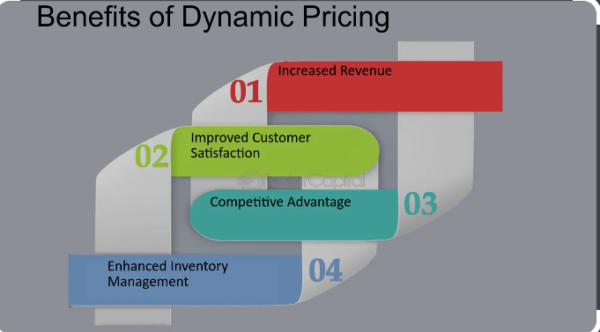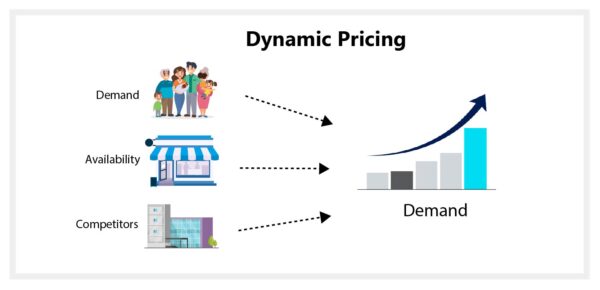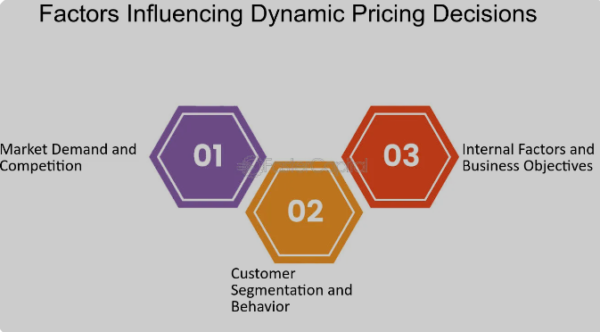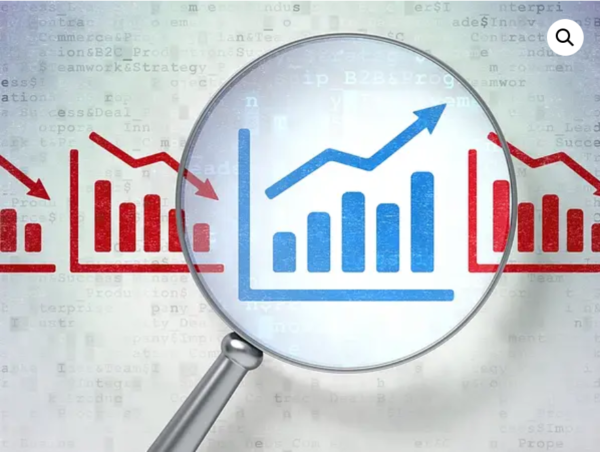Table of Contents
Dynamic pricing is a strategy that has become increasingly popular in the e-commerce industry. It involves changing the price of a product or service based on various factors, such as demand, competition, and supply. This strategy can help e-commerce businesses optimize their pricing and increase their revenue.
One of the main benefits of dynamic pricing is that it allows e-commerce businesses to respond quickly to changes in the market. For example, if a competitor lowers their prices, an e-commerce business can adjust its prices accordingly to remain competitive. This can help to increase sales and revenue, as customers are more likely to choose the product with the best value for money.
However, dynamic pricing can also be complex and time-consuming, mainly manually. This is where technology comes in, with many e-commerce businesses using dynamic pricing software to automate the process. These tools can help companies assess their price potential, benchmark against competitors, and adjust prices in real-time based on market data. Dynamic pricing is a powerful tool for e-commerce businesses looking to optimize their pricing and increase revenue.

Fundamentals of Dynamic Pricing
Understanding Dynamic Pricing
Dynamic pricing is a strategy that adjusts the price of a product or service based on various factors such as supply and demand, competition, and price perception. It aims to offer the right price to customers at the right time, maximizing revenue and profit.
Dynamic pricing algorithms use data analysis to adjust prices in real time, considering market trends and customer behaviour. For example, if a product is in high demand, the price may increase; if it is not selling well, the price may decrease.
Benefits of Dynamic Pricing in E-Commerce
Dynamic pricing has several benefits for e-commerce businesses. It enables companies to respond quickly to changes in market conditions, ensuring that prices are always competitive. This can lead to increased sales, customer loyalty, and revenue.
Dynamic pricing can also help businesses optimize their strategies, increasing profit margins while offering competitive prices. Comanalyzingn determines each product’s optimal price by analyzing customer behaviour and market trends, maximizing revenue and profit.
In addition, dynamic pricing helps businesses improve their inventory management, reducing the risk of overstocking or understocking. By adjusting prices based on supply and demand, companies can ensure they always have the proper inventory.
Dynamic pricing is a powerful tool for e-commerce businesses looking to stay competitive and maximize their revenue and profit. By leveraging dynamic pricing algorithms, companies can offer the right price to the right customer at the right time, ensuring they always stay ahead of the competition.

Implementing Dynamic Pricing
Dynamic pricing can be a powerful tool for e-commerce businesses to increase revenue and optimize inventory management. However, implementing optimization pricing can be challenging, especially without the right software solutions and algorithms. This section will discuss the steps you need to take to implement dynamic pricing in your e-commerce business.
Dynamic Pricing Software Solutions
To implement dynamic pricing, you need the right software solutions to help you control and monitor your pricing strategy. There are many pricing software solutions available in the market that can help you implement dynamic pricing, such as:
- Price2Spy: a price monitoring and dynamic pricing software that can help you monitor your competitors’ prices and adjust your prices accordingly.
- Omnia Retail is AI-powered pricing software that can help you optimize your pricing strategy based on the market, optimizing customer behaviour and inventory levels.
- Dynamic Pricing by Wiser: a dynamic pricing software that can help you set prices based on real-time market data and customer behaviour.
Steps to Implement Dynamic Pricing
Implementing dynamic pricing requires careful planning and execution. Here are the steps you need to take to implement dynamic pricing in your e-commerce business:
- Understand Your Goals and Objectives: Define your goals and objectives before implementing dynamic pricing. Consider what you want to achieve with dynamic pricing. Is it to boost sales, increase revenue, optimize inventory management, or improve customer optimization? Defining your goals and objectives will help you choose the right pricing strategy and software solutions.
- Analyze Your Data: To implement dynamic pricing, you should analyze your data, such as sales, customer, and market data. This will help you identify pricing patterns and trends that you can use to optimize your pricing strategy.
- Choose the Right Proptimizerategy: There are many pricing strategies you can use for dynamic pricing, such as demand-based pricing, time-based pricing, and competitor-based pricing. Choose the right pricing strategy based on your goals and objectives and the data you have analyzed.
- Set Your Dynamic Pricing Algorithms: To analyze dynamic pricing, you need to set your pricing algorithms, which will adjust your prices based on market conditions and customer behaviour. Ensure your pricing algorithms are accurate and reliable and align with your pricing strategy.
- Monitor and Adjust Your Prices: Once you have implemented dynamic pricing, you need to monitor and adjust your prices based on the data you collect. This will help you optimize your pricing strategy and achieve your goals.
Dynamic pricing requires the right software solutions, careful planning, and execution. Following the steps outlined above, you can implement dynamic pricing in your e-commerce business and achieve your goals and objectives.

Dynamic Pricing and Market Analysis
As an e-commerce business, you must monitor market trends and analyze your competitors to stay ahead. Analytical pricing is a strategy that allows you to adjust product prices in real-time based on market trends, competitor prices, sales volume, and inventory levels. By analyzing market data and competitor prices, you can determine competitive and profitable prices.
Analyzing Competitors and Market Data
You must analyze your competitors’ prices and market data to develop a dynamic pricing strategy. This will help you understand current market trends and your competitors’ charges for similar products, which you can use to set competitive prices.
A price tracking tool is one way to analyze your competitors’ prices. This tool will analyze competitors’ prices and alert you when they change them. You can then adjust your prices accordingly.
Another way to analyze market data is to use market research tools to provide information on market trends, sales volume, and inventory levels. You can use this information to adjust your prices based on demand.
Adapting to Market Trends and Demand
Dynamic pricing allows you to adapt to market trends and demand quickly. Adjusting your prices based on demand can maximize your profits and stay ahead of your competitors. For example, if you notice that a particular product is selling well, you can increase the price slightly to maximize your profits. On the other hand, if a product is selling well, you can reduce the cost to increase sales volume.
By analyzing market data and adapting to market trends, you can implement a successful dynamic pricing strategy to help you stay competitive and profitable in the e-commerce market.

Optimization and Advanced Strategies
Price Optimization
Price optimization is crucial for e-commerce. It determines a product or service’s most beneficial price point in a given market. You must understand your customers’ behaviour, market trends, and competitors’ pricing strategies to optimize prices.
You can use optimization tools to optimize price factors and demand, inventory, and seasonality. For example, you can set up a rule that increases the cost of a product when the market is high and lowers it when the demand is low. You can also use analytics to analyze your sales and identify trends and patterns to help analyze prices.
Advanalyzeynamic Pricing Modules
Advanced dynamic pricing uses machine learning algorithms to analyze large amounts of data and make real-time pricing decisions. This analysis can consider customer behaviour, competitor pricing, and market trends to optimize prices and optimize.
The optimum of an advanced dynamic pricing module is maximized pricing, which maximizes machine learning to predict future demand and adjust prices accordingly. Another example is a personalized that uses customer data to offer customized product preferences and purchases. You need access to large amounts of data and powerful computing resources to implement advanced dynamic pricing modules. It would be best if you also deeply understood machine learning algorithms and how they can be applied to pricing optimization.
Optimization strategies are for e-commerce companies that want to stay competitive and maximize revenue. Mmaximizeg advancedMaximizings and modules can take your pricing strategy to the next level and achieve even better results.

Ethics and Customer Perception
Dynamic pricing is a strategy that allows businesses to adjust prices based on real-time market demands, customer behaviour, and other factors. While dynamic pricing can help companies maximize profits and competition, it can also raise ethical concerns and affect customer perception.
Addressing Ethical Concerns
One of the main ethical concerns associated with dynamic pricing is price discrimination. This occurs when businesses charge different prices to customers based on their location, browsing history, or purchasing power. This can make customers feel unfairly treated and damage their perception of the business.
To address these concerns, businesses can implement transparency measures, such as providing clear explanations for price changes and offering price-matching guarantees. They can also implement fairness algorithms that ensure prices are not based on factors that could lead to discrimination.

Managing Customer Satisfaction and Loyalty
Another important consideration for businesses using dynamic pricing is managing customer satisfaction and loyalty. Customers who feel they are being mistreated or that prices are constantly changing may be less likely to repeat purchases or recommend the business to others.
To mitigate these risks, businesses can focus on providing exceptional customer experiences, such as personalized, personalized and responsive service. They can also use loyalty programs and other incentives to reward customers for their repeat business and build long-term relationships.
By addressing ethical concerns and managing customer satisfaction and loyalty, businesses can use dynamic pricing to their advantage while maintaining a positive reputation and perception among their customers.







